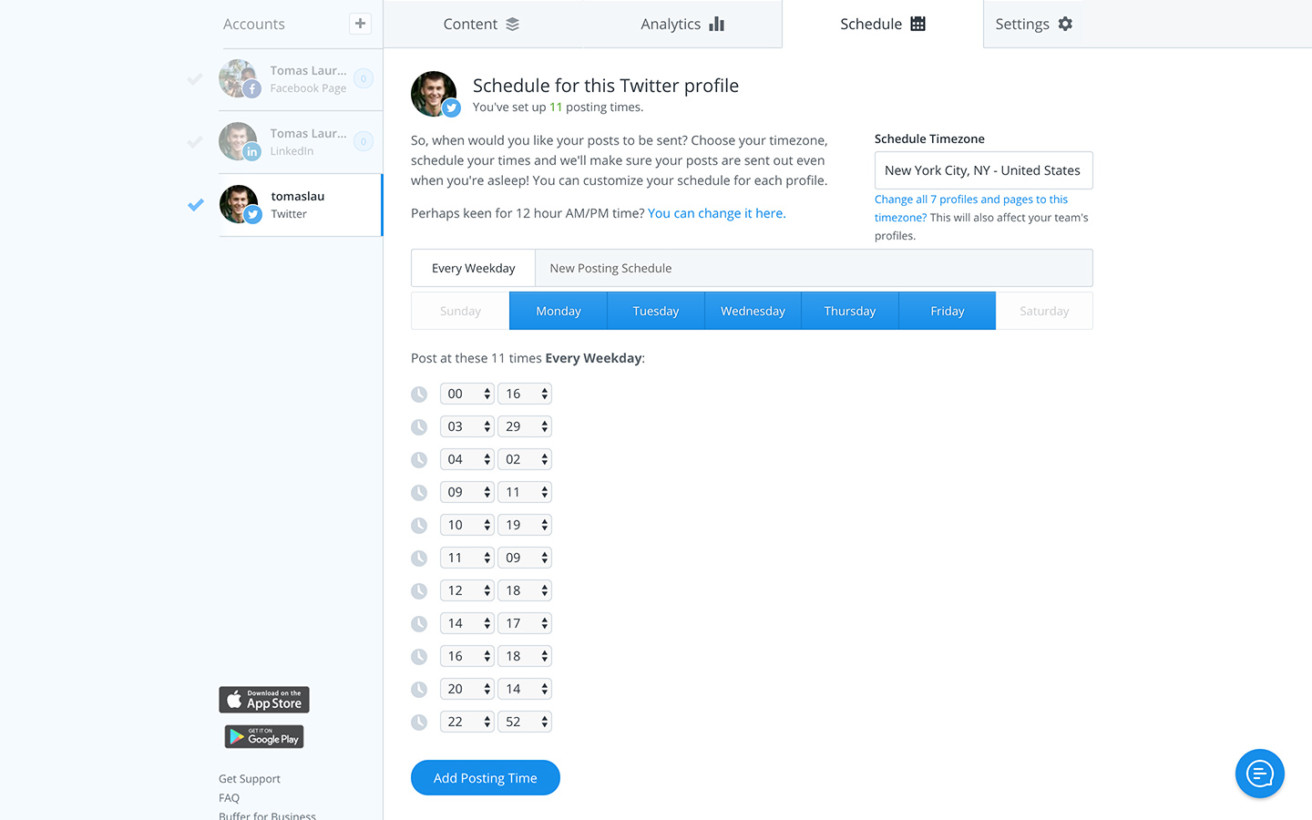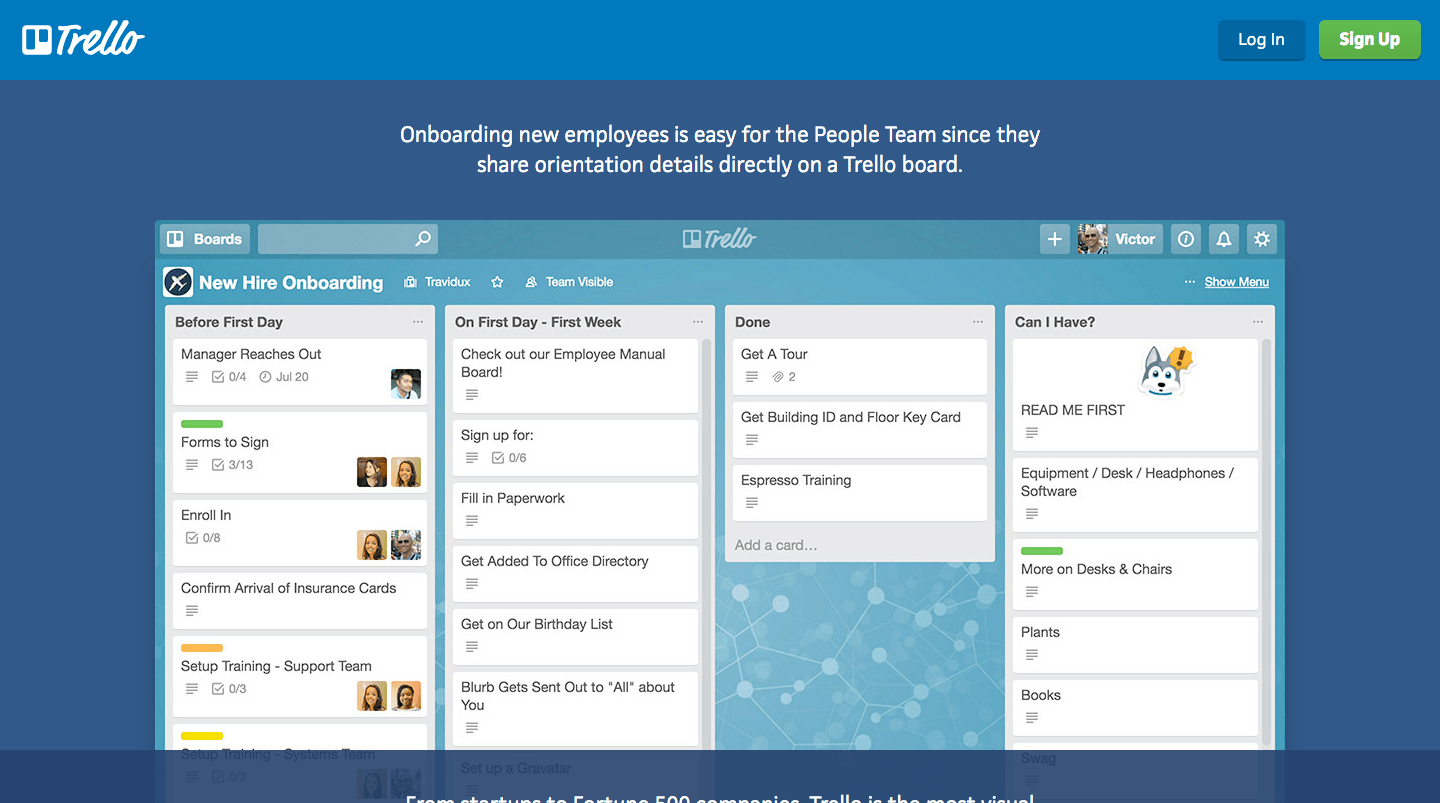Bill Gates is famous for saying, “I choose a lazy person to do a hard job. Because a lazy person will find an easy way to do it.”
However shocking that sounds, putting more work and hours into something doesn’t always yield better results. And today’s fast-paced online world can be especially tough on businesses that don’t manage to keep up.
As a busy blogger, you’re probably juggling a multitude of different tasks, many of which are repetitive and frankly, quite boring. For your blog to take off and scale into something greater than a company of one employee, you must use your time efficiently and learn to automate and delegate.
Read on to learn about the practical tools of automation and how to use them to grow your business.
Importance of automation
On average 49 percent of companies are currently using marketing automation and the adoption is growing rapidly, as there are 11 times more B2B organizations using marketing automation now than in 2011.
Why is everyone jumping on this new trend? According to various research findings, marketers who’ve adopted marketing automation count multiple benefits:
- They see an average increase of sales revenues by 34 percent (Pardot, 2015)
- 64 percent of marketers say they saw the benefits of using marketing automation within the first six months of its implementation. (Regalix, 2015)
- 74 percent of respondents say the technology’s ability to save them time is its largest benefit. This is followed in close second by increased customer engagement (68 percent), with more timely communications and increased opportunities tied in third place (58 percent). (Adestra, 2015)
Besides helping to improve customer experience, email marketing and, lead management as well as helping to reduce human error in marketing campaigns, the biggest and most important benefit of automation for busy bloggers is that it can save hours and hours of time, which could be spent creating new content and growing the business.
Curating content
Creating excellent content for your blog is only half the story. You might be a skilled writer and an expert in your field, but churning out high-quality content every day is hardly possible if you’re a one-man show. And yet, it doesn’t mean you should let your social media presence suffer.
What you need to keep your communication flowing is a rich selection of well-written content that your target audience would find interesting and valuable. By sharing blog posts, videos or infographics created by other bloggers or businesses you will continue to create value for your followers and boost your credibility. Content curation can be an opportunity for bloggers to build their following and figure out the interests and motivations of their audience.

Explore the most popular content curation tools, such as Pocket, Scoop.it, Feedly, and Storify that will help you to discover, save, and distribute the best content from around the web.
Scheduling social media updates
The best way to manage the time you spend on social media is by blocking off a few hours in your calendar for content scheduling and getting it all done in one go. Buffer and Hootsuite are the leading content scheduling tools available online that can take the pain out of this boring task. Instead of copy-pasting the same message across different platforms, fiddling with different settings and re-uploading visuals, get all your social media content planned out and scheduled by using a dedicated automation tool.

To get the most of social media automation, be sure to craft your own social media content plan. A robust social media content calendar will not only help you stick to a consistent schedule, but will also make the planning of time-sensitive content easier and help you enforce a healthy sharing ratio. One of the most popular ways for figuring out the ideal ratio for the content you’ll share on different channels is to use the 411 rule. This rule refers to a practice of sharing four user-centric educational or entertaining posts for every one “slightly promotional” and one “hard sale” post.

When it comes to choosing the optimal time to post on social media, you’ll need to do a bit of heavy-lifting yourself and analyze your audience’s behavior and preferences. When are your followers online? When do you see the level of engagement spike throughout the day? Look into the built-in analytics on Twitter or Facebook to determine the best times to push your messages out. Alternatively, you can rely on the clever algorithms that Buffer and Hootsuite both use to automatically schedule your post to go out when they’re most likely to be noticed. CoSchedule have rounded up a number of studies to figure out the perfect times to post and found that:
- The best times to post on Facebook are Saturday and Sunday at 12–1 p.m.
- The best time to tweet is noon and 5–7 p.m. on Wednesdays.
- The best time to post on LinkedIn is Tuesday, Wednesday, and Thursday at 7–8:30 a.m., noon, and 5–6 p.m.
Automation plugins for your blog
Although not a WordPress plugin, IFTTT is one of the most versatile automation tools on the market. It can send you a daily email with the GIFs that are trending on Giphy or notify you when a new subscriber is added to your MailChimp list. The possibilities are wide-ranging and exciting.
To maximize the ROI of your email marketing, ensure your workflow is set up properly. Use a WordPress form builder to have a smart-looking subscription form that integrates with your email provider on your site. Then set up an automated workflow on your email platform to trigger a welcome campaign once a new email is added to your mailing list. If you want to quickly capture new leads on your blog and add them to the right mailing list, CaptainForm, a user-friendly WordPress form builder that integrates with MailChimp and GetResponse, is a good place to start.

Another cool WordPress plugin that can take some work off your hands is Revive Old Post, which promises to help you keep the old posts alive and drive more traffic by reposting them on social media. To keep your content calendar neatly organized, you can also explore the CoSchedule plugin, which will help you take control of your blogging calendar.
Hiring and training a VA (virtual assistant)
Many bloggers will attest to the idea that hiring a VA right from the start is the best thing you can do for your business. The most common objection here is that it seems counterintuitive to pay someone before you start making money yourself, but it is the only way for you to focus on the most important, revenue-producing tasks and leave the rest in someone else’s capable hands.
So where do you find a talented VA that will help you bring order to chaos? Many entrepreneurs scour freelancer marketplaces like Upwork and PeoplePerHour or leverage their personal and professional networks on social media (Facebook and LinkedIn groups, Twitter hashtags).
When hiring a VA, make sure you know exactly what type of tasks you’ll be outsourcing so that you can look out for the right set of skills. Do they need a good written English? Does it matter what time zone they live in? Do they need any specific knowledge? If you’re struggling to wrap your head around this, use Foundr’s Hiring a VA checklist to cover your bases.

If your VA lives on the other side of the world, you can use tools like Screenmailer to explain projects and tasks in a quick and reliable way. Trello is also an excellent tool to keep track of the progress and make sure you’re all on the same page.
Avoiding common mistakes
Don’t be afraid of making a few mistakes here and there – they’re not going to kill your business. But there are a few things to keep in mind when it comes to marketing automation:
1) Set goals for each automated effort
You will need a way to measure the success of your marketing automation, so make sure you set goals for each automated effort, such as social media, email workflows, and so on. This will help you to track the performance of automated campaigns and ensure they’re optimized for the best results.
2) Optimize your email automation
Automating your email marketing will be an exhilarating experience. However, it’s key to remember that adding your leads to onboarding or welcome automation workflows only works if the lists are segmented and you personalize the content that you send. Don’t make the mistake of blasting generic emails to the entire mailing list because it will turn people away.
3) Don’t get lazy
Marketing automation will save you tons of time, but don’t make the mistake of letting things take their own course. Take time every week to re-test and review your automated messages to make sure they’re still relevant. If your engagement rates start to drop, it’s time to refresh the content and do some A/B testing.
Conclusion
Once you turn your blog into a source of income, your efforts must be focused on growing the business. So you can’t spend your days plowing through a to-do list that has no direct (or very little) impact on your revenue. Automating the most time-consuming tasks will free up a lot of time and allow you to scale your business without much investment. And if you decide to hire a VA, there is only one thing to remember – never outsource core tasks and you’ll be just fine!
Get the TNW newsletter
Get the most important tech news in your inbox each week.






